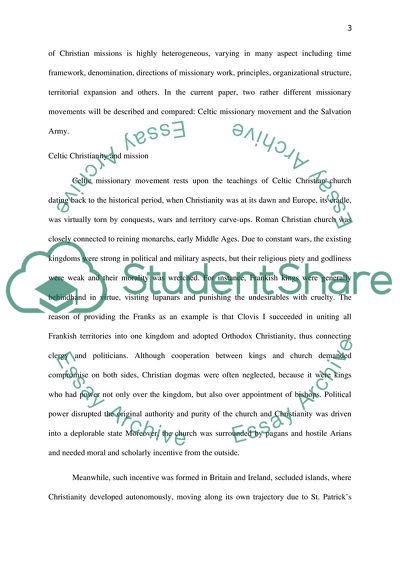Cite this document
(Celtic Christian Mission and the Salvation Army Essay Example | Topics and Well Written Essays - 2750 words, n.d.)
Celtic Christian Mission and the Salvation Army Essay Example | Topics and Well Written Essays - 2750 words. https://studentshare.org/religion-and-theology/1857065-compare-and-contrast-two-missionary-movements-celts-and-salvation-army
Celtic Christian Mission and the Salvation Army Essay Example | Topics and Well Written Essays - 2750 words. https://studentshare.org/religion-and-theology/1857065-compare-and-contrast-two-missionary-movements-celts-and-salvation-army
(Celtic Christian Mission and the Salvation Army Essay Example | Topics and Well Written Essays - 2750 Words)
Celtic Christian Mission and the Salvation Army Essay Example | Topics and Well Written Essays - 2750 Words. https://studentshare.org/religion-and-theology/1857065-compare-and-contrast-two-missionary-movements-celts-and-salvation-army.
Celtic Christian Mission and the Salvation Army Essay Example | Topics and Well Written Essays - 2750 Words. https://studentshare.org/religion-and-theology/1857065-compare-and-contrast-two-missionary-movements-celts-and-salvation-army.
“Celtic Christian Mission and the Salvation Army Essay Example | Topics and Well Written Essays - 2750 Words”. https://studentshare.org/religion-and-theology/1857065-compare-and-contrast-two-missionary-movements-celts-and-salvation-army.


